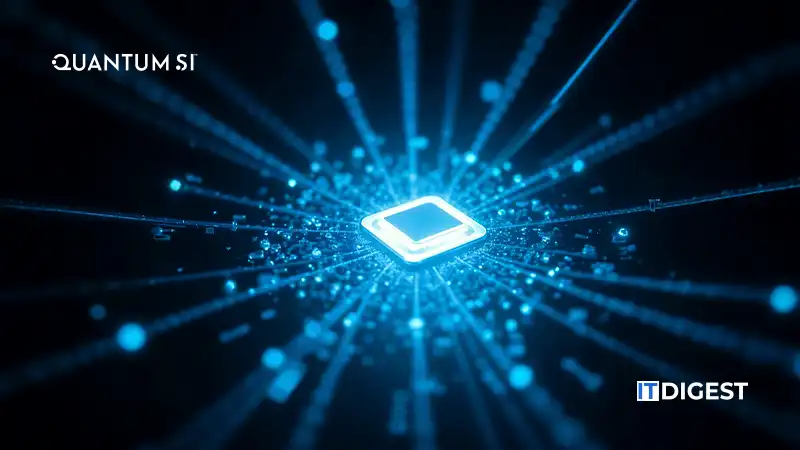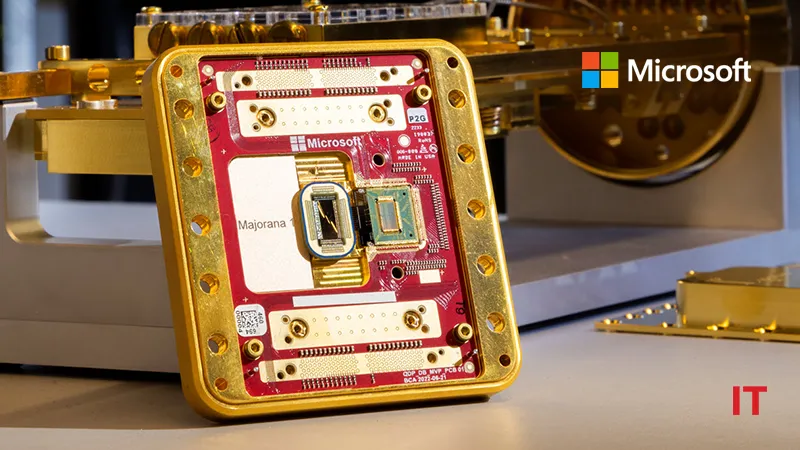Microsoft has launched Majorana 1, the world’s first quantum chip powered by an innovative Topological Core architecture. This pioneering technology is set to accelerate quantum computing advancements, enabling the resolution of complex, industrial-scale problems in years rather than decades.
A Breakthrough in Topological Qubits
Majorana 1 leverages topoconductors—revolutionary materials designed to observe and control Majorana particles—allowing for the creation of more reliable and scalable qubits. These advances pave the way for quantum systems capable of reaching a million qubits, a critical milestone for solving real-world challenges.
“We took a step back and said, ‘Let’s invent the transistor for the quantum age,’” said Chetan Nayak, Microsoft Technical Fellow. “That’s how we got here—through a precise combination of materials that enable a new kind of qubit and ultimately our entire architecture.”
The Path to One Million Qubits
Microsoft’s architecture, implemented in Majorana 1, establishes a clear roadmap to scaling a quantum system to one million qubits. Achieving this scale is essential for tackling problems like decomposing microplastics, creating self-healing materials, and revolutionizing manufacturing, healthcare, and sustainability.
“Whatever you’re doing in the quantum space needs a path to a million qubits,” Nayak emphasized. “We have actually worked out that path.”
The Science Behind Majorana 1
Topoconductors, or topological superconductors, introduce a novel state of matter that enables stable qubits. A recent study in Nature highlights how Microsoft successfully created and measured these exotic quantum properties—a key step toward practical quantum computing.
This was achieved by engineering an atom-by-atom materials stack using indium arsenide and aluminum, which facilitates the emergence of Majorana particles.
Also Read: IonQ Unveils Compact Quantum Computing with XHV Tech
Digital Control: The Key to Scalability
Majorana 1 integrates a Topological Core that is error-resistant at the hardware level. Unlike traditional qubits requiring complex analog controls, Microsoft’s digital methodology simplifies scaling, making large-scale quantum computing more feasible.
“Our goal from the start was to build a quantum computer for commercial impact, not just thought leadership,” said Matthias Troyer, Microsoft Technical Fellow. “We knew we needed a new qubit. We knew we had to scale.”
Industry Recognition and Collaboration
Microsoft’s quantum advancements have gained recognition from DARPA, which included the company in its Underexplored Systems for Utility-Scale Quantum Computing (US2QC) program. Microsoft has also partnered with Quantinuum and Atom Computing to further push quantum computing frontiers.
The Future: AI-Powered Quantum Solutions
Quantum computing’s ability to model natural behaviors with unprecedented precision could revolutionize industries. By simulating atomic interactions, quantum computers could design materials that resist corrosion, develop catalysts to break down pollutants, and unlock breakthroughs in healthcare and food production.
“Any company that makes anything could design it perfectly the first time,” said Troyer. “The quantum computer teaches AI the language of nature so the AI can tell you the recipe for what you want to make.”
Redefining Quantum Computing at Scale
Microsoft’s topological qubits integrate error resistance into their design, allowing for digital control via simple voltage pulses—akin to flipping a switch. This simplifies quantum operations and enhances scalability.
Majorana 1’s compact form factor ensures deployability within Azure datacenters, bringing practical, large-scale quantum computing closer to reality.
Engineering the Future of Quantum Materials
Microsoft’s topological qubit design utilizes aluminum nanowires in an H-shaped configuration, where each H contains four controllable Majoranas, forming a single qubit. These structures can be tiled to achieve scalable quantum computing.
The development of topoconductors was one of the most challenging aspects of this breakthrough. Microsoft meticulously engineered an indium arsenide-based semiconductor-superconductor hybrid to create a stable quantum environment.
“We are literally spraying atom by atom,” said Krysta Svore, VP of Advanced Quantum Development. “Ironically, we also need a quantum computer to fully understand these materials—it’s an incredibly complex challenge.”
With Majorana 1 and its Topological Core, Microsoft is poised to lead the quantum computing revolution, bringing the future of scalable, commercially viable quantum applications within reach.
































